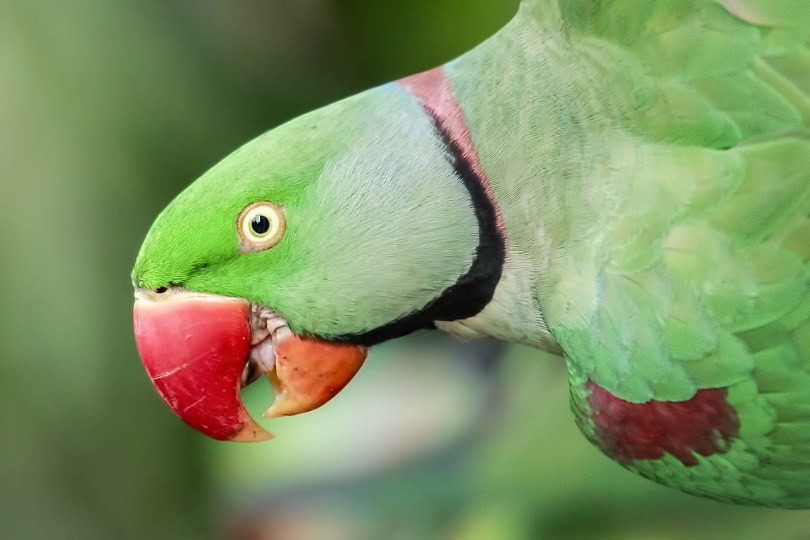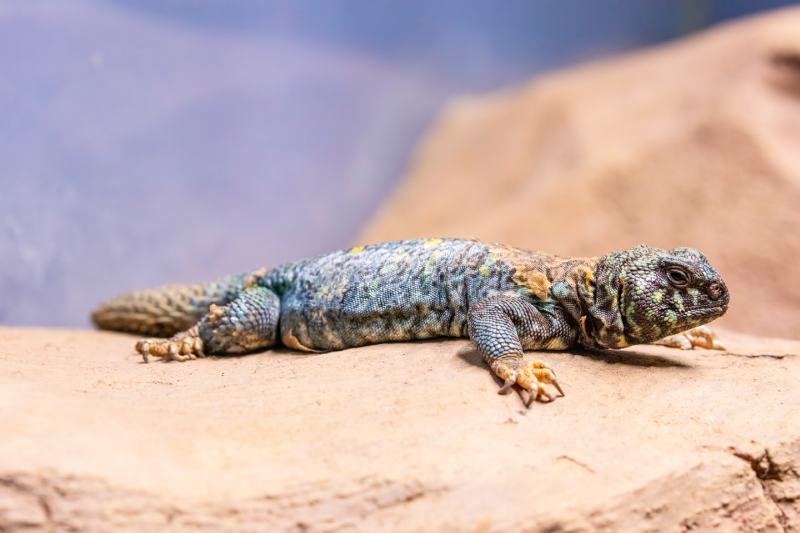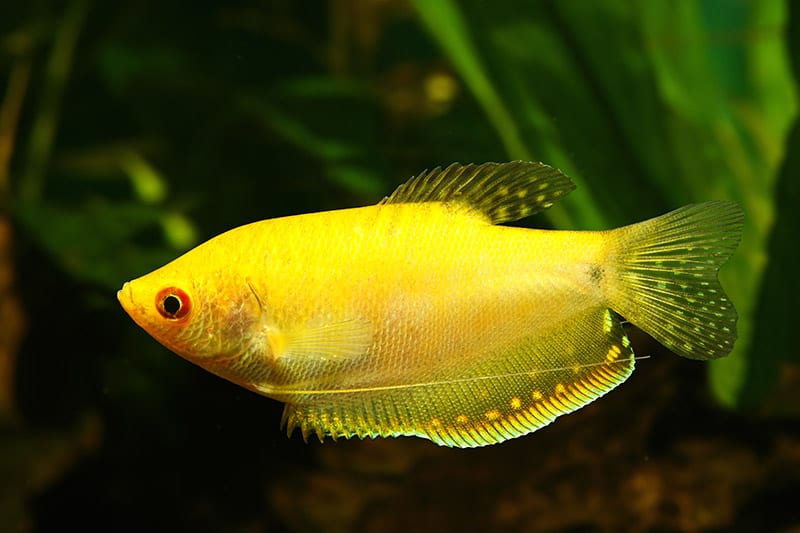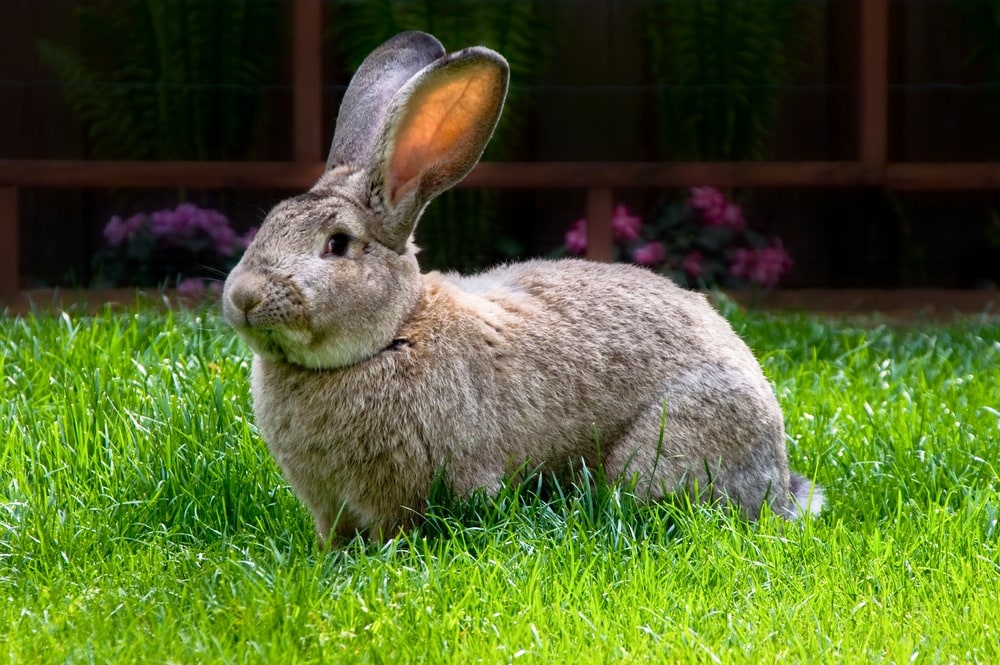Click to Skip Ahead
Popular pet birds for centuries, Alexandrine parakeets are colorful, energetic, loving, and affectionate. One of the largest parakeets, this bird needs a bit more space than some other smaller species but makes a stellar pet regardless.
Read on to learn more about the Alexandrine parakeet and what to expect if you decide to bring one into your family!

Species Overview
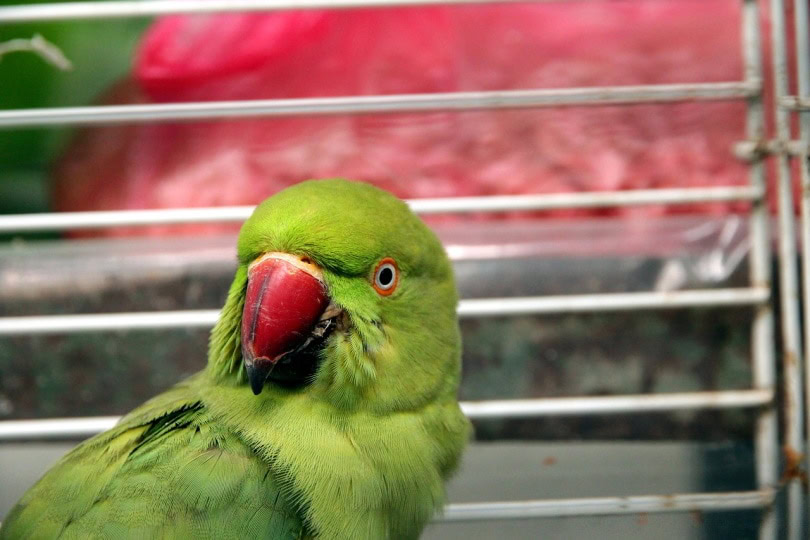
| Common Names: | Alexandrine parakeet, Alexandrian parrot |
| Scientific Name: | Psittacula eupatria |
| Adult Size: | 22–24 inches |
| Life Expectancy: | 30–40 years |

Origin and History
Alexandrine parakeets are native to the Indian Peninsula, from the east coast of India down to Sri Lanka. They are named for Alexander the Great, who first brought these birds to Europe and the Middle East.1 They quickly became popular status symbols among the royals and nobles of the continent.
Alexandrine parakeets adapted quickly to their new environment, so well in fact, that today, there are large populations of wild parakeets in many European and Middle Eastern countries.
Wild Alexandrine parakeets live in forests, farmland, and fields. They usually form small flocks, gathering in larger groups to feed. Unfortunately, the wild population of Alexandrine parakeets is declining due to habitat loss and the illegal pet trade.
- See Also: Different Types of Parakeet Colors
Temperament
Playful and affectionate, Alexandrine parakeets make it easy to understand why they’ve been popular pets since the time of Ancient Greece. These birds are intelligent and athletic, able to learn tricks, and thoroughly entertaining to live with. They’re also talented talkers and can develop a large vocabulary.
Alexandrine parakeets bond closely with their owners and are loyal pets. They like plenty of attention and time out of their cage, enjoying life with their human family.
Like all pet birds, Alexandrine parakeets need to be socialized and tamed to ensure they make gentle family members. “Teenage” Alexandrine parakeets in particular need patient, diligent work, as they often go through an aggressive phase. Once that challenge is navigated, adult Alexandrine parakeets aren’t prone to biting and make lovely family pets.
- Affectionate, gentle birds
- Excellent talkers
- Playful
- Can be loud
- Need more space than smaller parakeets
Speech & Vocalizations
Used to calling to each other over long distances in the wild, Alexandrine parakeets are not exactly quiet birds! They produce several different cries, and their voices carry quite well, something that is not likely to be appreciated by close neighbors. Due to this, these birds aren’t good for apartment living.
Alexandrine parakeets are well-known for their talking ability. They can imitate human speech accurately and clearly. This gift of speech is a major reason that they are such sought-after pets.

Alexandrine Parakeet Colors and Markings
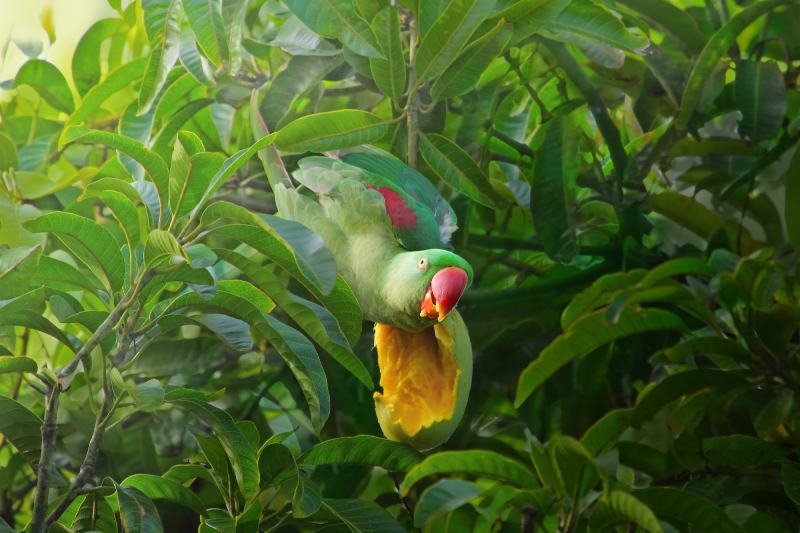
Alexandrine parakeets, both males and females, are mostly green in color with large red beaks. They have yellow bellies, blue-gray on their heads, and a red patch on each shoulder. Males have a pink and black ring around their necks, making it easy to tell males and females apart.
This species also comes in several color mutations, both naturally occurring and deliberately produced by crossing Alexandrine parakeets with another species, the Indian ringneck parakeet.
- Dark green: similar to the original but darker
- Grey-green: similar to the original but with a grayish tint
- Turquoise: turquoise body, pale red shoulder patch
- Blue: bright blue body, grey-white shoulder patch
- Lutino: yellow body, red shoulder patch
- Lutino grey-green: yellow-green body, red shoulder patch
- Albino: very rare, all white, no shoulder patch
- Albino gray: white with gray tinge, no shoulder patch
- Bronze: light green body, grayish belly, red shoulder patch
- Clearhead fallow: light green body, yellow head, dark red shoulder patch
- Spangle: light green body with yellow edges, dark red shoulder patch
- Pied: yellow-green with green body and head, dark red shoulder patch

Caring for the Alexandrine Parakeet
Housing
Due to their long tail feathers, Alexandrine parakeets need a fairly large enclosure for their size. They should have a cage no smaller than 36 inches tall by 24 inches wide and deep. Enthusiastic chewers, these parakeets need plenty of wood and rope toys in their cage to satisfy their urge to chomp. They also need several perches, food and water dishes, and even puzzle toys to complete the setup.
The cage should be kept in a location away from extreme temperatures or dangerous kitchen fumes. A spot with plenty of natural light and family activity is ideal for the Alexandrine parakeet.
With proper introduction and supervision, these birds can live with others of their species. They should not be kept with smaller birds, though.
Grooming
Alexandrine parakeets love to bathe and should be given regular misting or access to a large birdbath at least once a week.
As all pet birds do, this parakeet needs a regular nail, beak, and wing trim. With practice, many bird owners can learn to trim nails and wings at home. Beak trimming should only be done by a veterinarian or experienced groomer to avoid any accidents or injuries to the bird.

Common Health Problems
Alexandrine parakeets are generally healthy, active, adaptable birds. They aren’t as inclined to develop behaviors like feather-picking or self-mutilation as some other species. Diseases that may be noted in the Alexandrine parakeet include:
- Psittacosis: a bacterial infection, also called parrot fever
- Aspergillosis: a respiratory infection, caused by a fungus
- Polyomavirus: a viral infection, most dangerous for young birds
A nutritious diet, regular cage cleaning, and plenty of exercise will help keep your Alexandrine parakeet healthy. Find a veterinarian experienced with birds, and make sure your pet gets regular checkups and any recommended preventative care.
Signs of illness in your Alexandrine parakeet include loss of appetite, poor feather condition, decreased activity level, sneezing, and eye discharge. If you are worried about the health of your bird, consult your veterinarian.
- Psittacosis
- Aspergillosis
- Polyomavirus
Diet and Nutrition
A good-quality pellet food should make up the majority of your Alexandrine parakeet’s diet. Fresh fruits and vegetables also need to be included to mimic the variety of the parakeet’s food sources in the wild. Leafy greens, carrots, zucchini, and peas are some vegetable options to consider. Suitable fruits include melon, berries, bananas, and pears. Other foods that can be offered less often include commercial seed mix, grains, and nuts.
Every bird has different nutritional needs and tastes, so if your parakeet doesnʻt seem to like a fruit or vegetable you offer, keep trying or just move on to something else. You will also need to adjust how much food you offer based on your particular bird’s appetite. Clean up any uneaten fresh food at the end of the day.
Exercise
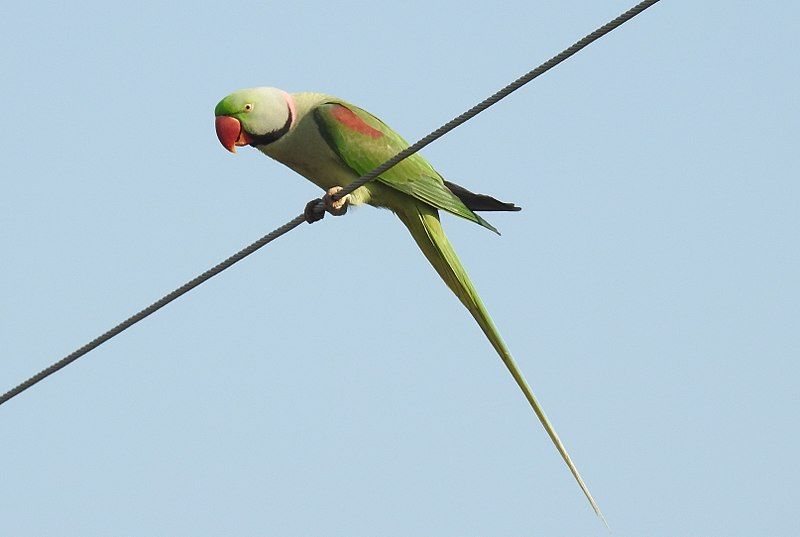
Alexandrine parakeets are extremely active birds that need plenty of social interaction every day. Ideally, they should spend 3 to 4 hours out of their cage per day, exercising and spending quality time with their humans. Make sure you bird-proof your pet’s space to avoid any accidents and injuries, as Alexandrine parakeets are curious, prone to chewing things like electrical wires.
A bird gym or a large flight cage are good options to help your pet get their daily exercise. They also need plenty of toys to chew and entertain themselves.
For mental stimulation and socializing, Alexandrine parakeets enjoy perching on their humans as they go about their day or learning tricks. These birds are excellent talkers, so teaching them new words is an ideal way to bond with your pet.
Where to Adopt or Buy an Alexandrine Parakeet
Due to their popularity, Alexandrine parakeets are usually easy to find for sale in pet stores or online from private breeders. It is illegal to capture wild Alexandrine parakeets and sell them, so be certain you are purchasing a captive-bred bird.
The cost of this parakeet varies based on their color mutation and age and the place where you purchase them. Expect to pay anywhere from $500 to $2,800.
Alexandrine parakeets are often available for adoption through local animal shelters or exotic bird rescues. Check to see if there is a bird rescue in your area if you are interested in adopting your new pet. Adoption fees will vary, but $200–$275 is a good figure to plan on paying.
Remember, even if you find this bird to adopt for free or cheap, you will still need to pay for supplies, food, and vet care for the lifespan of an animal that can live as long as 40 years.

Summary
Birds can make unique and entertaining pets, and the Alexandrine parakeet is one of the best options for many reasons. Before bringing one home, keep in mind that they live up to four times as long as the average dog or cat. You and your parakeet could very well be growing old together. If that type of commitment isn’t for you, it is probably best to consider a different pet than the Alexandrine parakeet.
Featured Image Credit: sachin kadam, Pixabay
